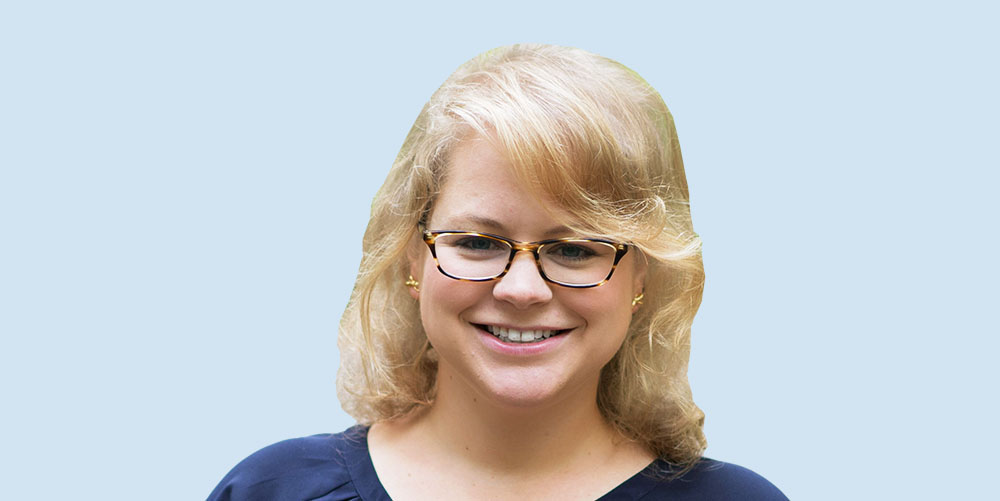Freemium can make or break your SaaS business. It’s a powerful growth engine, but its dark side is not for the faint of heart.
Is freemium a good fit for your product? Are there situations where you absolutely have to offer it? How do you figure out the ideal free plan?
For our recent roundtable, we gathered four SaaS experts to share their experiences with freemium. On the panel were:
- Melanie Crissey, Product Marketing at Netlify
- Alban Brooke, Head of Marketing at Buzzsprout
- Ruben Gamez, founder of SignWell
- Jane Portman, co-founder of Userlist
They walked us through the benefits and risks of freemium, and how to switch from free trial to freemium without cannibalizing your revenue.
Watch the full recording below, or continue reading for the condensed takeaways of the discussion.
Don’t wait for the muse. Apply this step-by-step method to write high-performing email campaigns in hours, not weeks.
What is freemium?
Freemium is a SaaS business model that offers the basic features of a product for free, while charging a premium for advanced or additional features.
Coined in 2006, freemium came from the combination of “free” and “premium”.
How does freemium differ from the traditional free trial? While both models offer features for free, what separates the two is the duration.Freemium provides access to the basic features of the product for free without a time limit. On the other hand, a free trial provides a portion or all features of the product for free for a limited time.
Benefits: why marketers and PLG experts love freemium
Effective customer acquisition
Going freemium lowers the barrier to entry. This gets people more interested to sign up and test out your product. Alban says:
“Compared to going through signing up for five different solutions and trying to see which one is the best. All of a sudden, they see what’s free, they click, and they’re going. You’ve short-circuited that process.”
And by lowering this entry barrier for users, you also create a gate for your competitor. Melanie says:
“You have the opportunity to win the entire market versus getting your piece of a small chunk.”
Every free user is your “mini-marketer”
To make freemium work, Ruben says users also need to contribute value. This could be in the form of upgrading to a paid plan, marketing your product, and others:
“It’s about distribution. Whether it’s through word of mouth, virality, or some other way. They make the product better in some way. If that part is not there, it’s hard to make freemium work.”
As Claire Suellentrop of Forget the Funnel puts it, free users need to be your “mini-marketers” in exchange for the service they’re getting for free.
Freemium unlocks product-led business growth
Melanie shares that by observing how users interact for user research, you’re able to improve your product faster:
“The more people that are using your product, the better you’re going to uncover bugs. You’re going to get more feedback and you will iterate and move faster.”
She also says that it enables faster innovation in the space as well:
“The benefit of having your product open for everyone is you can really go fast to solve customer problems as a market and that pressure can be really good.”
Easier to do marketing and build your brand
Most indie founders and startups want to build awareness for their product. Alban says freemium could help you get that attention:
“You might be entering a market where nobody else is free and now people have a reason to pay attention to you versus your competition.”
Ruben adds that this also gives you an idea of what your paying customer would look like:
“It basically gives you the opportunity to engage with users and give them value over a longer period of time in a way that’s directly aligned with your product.”
Risks: why you should think twice before switching
Security, customer quality & muddled data
Enabling spam and scam to happen using your product
Unfortunately, the low barrier to entry is a double edged sword. Because anyone can get in, security and customer quality could decline. Alban says:
“Anybody can use your product for any purpose. You have now enabled all the scams, all the spam, and all the grossest things on the internet to happen on your product.”
This now creates a new problem of fighting these unethical practices, on top of your current problems.
“You will now have to ask questions like: is my product exploitable in a way? Do I want to take on these headaches? Am I still searching for product-market fit?”
One way to fight against them is to think about the features that you will not include in your free plan:
“You could start thinking about ways that will introduce an issue with people trying to use it for unethical purposes. For example, we just introduced bulk sending of documents. Of course, we didn’t put any version of this feature on the free plan.”
Getting skewed data
Having more people also affects the type of data you’re getting. Alban says:
“You now have a very skewed data set and you start feeling this constant tension of ‘we’re too expensive’ or ‘we’re not giving away enough.’ You’re doing a lot of back and forth with people who did upgrade and now they want a refund.”
Attracting the wrong audience
By attracting the wrong audience, you’re getting learnings from the wrong people:
“It’s not to say they’re bad people, but you might be getting a lot of learnings from extremely cost-conscious groups. Whereas there might be people willing to pay 10x or even 20x what you’re charging but you’ve totally distanced yourself from them because you’ve kind of diluted the brand into this low cost option. You just learn totally different things when that’s the segment you’re catering to.”
Which is why customer segmentation is important when doing freemium because this will help you choose which data you should pay attention to. Apart from being on a paid plan, you can also segment customers according to the activities they’ve done on your tool, among other things. Ruben shares how they do it on SignWell:
“We use Help Scout as our help desk and we use their Beacon to pass in data. So we pass in the plan they’re on, how much they’ve paid, how many documents they have created, and other information like that. And when we’re talking to somebody, we have an idea of who we’re talking to.”
This segmentation data is used for filtering things like feature requests:
“When we take in feature requests, we have a spreadsheet of who requested it, but one of the columns in there is what plan they’re on. There’s a little bit of judgment involved because they can be on the free plan and they’re just trying it out for a bigger company — and that matters as well. But I think as long as you have the data and you use a little bit of judgment, you should be okay.”
Feedback from freemium users still has value: Ruben says they use that feedback for other purposes, like making the free product better.
Melanie adds that attracting the wrong audience might signal a problem with your positioning:
“If you’re attracting the wrong kind of people, it may not be just because the plan is free, but it could be your positioning. It could be the way that you’re talking about your product on your website. The people you’re attracting are using it for purposes that don’t really align with your ski slide path up to revenue that you need to build.”
Costs of supporting a high volume of users: technical and human
High volume of users requires more resources to support them. Melanie shares that this could be seen even in the onboarding stage:
“Think about how difficult it is to onboard users to your product both in terms of complexity and security. A lot of times when I see teams that aren’t successful on Netlify (which is very low friction), I think about what might be going on. Is it a hesitancy to connect it to a work environment where there might be red tape or regulations? Or could it be things that they need to talk to their team about before they get started?
I want to balance how do I help people activate in a way that’s going to lead to the real value versus how do I reduce friction so they can see the value right away.”
It won’t solve your product-market fit problem!
When doesn’t freemium work? — Jack Ellis of Fathom Analytics
There’s a common misconception that giving away something for free would answer the problem of why people don’t want to pay for your product. Alban shares:
“The problem is that nobody wants to pay for the product because it’s not solving a real problem. And they go, ‘oh, the solution is to make it free and then they’ll see the value.”
But most likely, the problem isn’t about your product-market fit:
“It’s likely that you might not be doing a good job of communicating what problem you’re solving or maybe this isn’t even a problem that people have.”
Which is why you have to validate if you are indeed solving people’s problems:
“You need to validate that people want this. Go spend money on Google ads, affiliates, or something to get people into the funnel.”
The point of customer conversion moves to the middle of the funnel
Freemium won’t solve the conversion problem: it only changes things up. Now all your friction moves from the initial signup flow towards free-to-paid upgrades.
And because conversions take longer, you won’t be able to make a direct comparison between freemium and a paid plan.
Freemium decreases short-term revenue in favor of long-term growth
As you’re able to solve users’ problems with your free plan, there is a trade-off between short-term revenue and long-term growth. Ruben says:
“You have to consider the distribution effects, whether it’s word-of-mouth or virality. If that’s not there, then it’s just not going to work and you’ll actually get fewer users.”
Melanie adds that this also relates to your exit strategy:
“If you want to be in the game for a really long time and your competitors are going freemium, you might have to go freemium just to stay in the game. Unless you have a really niche offering, or a professional services department, or some other secret sauce.If you’re looking at getting acquired by a company with similar values, think about what you’re bringing to the table. If it’s revenue or talent, there might be other ways that can get you to a successful exit without winning the whole market, and I think freemium is a long-term ‘win the market’ tactic.”
So should you switch to freemium?
Consider risks and benefits
Now that you know what the risks and benefits of going freemium are, you have to make sure that going freemium really is the solution to your product’s problem. Alban says:
“Identify what the problem is. Do you actually think freemium will solve this? Or is it something else you need to be trying?”
Unfortunately, a lot of businesses think that freemium might solve their problems when there’s a more appropriate solution. Alban shares his past experience:
“People talk about freemium as something that will solve their marketing problems. You may have just introduced a new problem of all the negatives of freemium, and you didn’t just start getting a ton of new people to the site because you didn’t solve the marketing issues.”
Bootstrapped businesses vs VC-funded companies
When is it smart as an established bootstrapped business to go freemium after a couple of years credit card upfront + trial period? — Michael Koper of Nusii
For bootstrapped companies, you could switch to freemium if you’re already profitable or if you feel like freemium is definitely the solution to your problem. Alban says:
“Make sure you’re already profitable. You already have product-market fit, you’ve got people putting in their credit cards, and you’re making money so you can sustain yourself. Or you have an intuition that for some reason, the problem you’re going to solve with this freemium is the problem that your product has.”
For businesses that have VC funding, it’s much easier to offer freemium if your goal is to blanket the space with your product.
When do you absolutely need to offer freemium?
Alban says that for products that need network effects, like marketplaces that need multiple different types of people engaging in the platform, you almost have to be free:
“Any barrier in entry is going to kill the product. We’re experiencing this now with our new product that pairs podcasters and advertisers together. The more gates you put up, the more difficult it will be. That’s just the business and you extract the value way down the road. As a marketplace, you don’t extract the value upfront.”
We had an interesting conversation with John Doherty about building marketplaces. Listen to the podcast episode here.
Don’t wait for the muse. Apply this step-by-step method to write high-performing email campaigns in hours, not weeks.
Getting started with freemium: how to switch smoothly
Look for signs that freemium might work
Turning freemium on will cause a dip in your conversions. This might cause a bit of panic among your team, but you have to constantly remind yourself about the duration of the testing period.
While there’s no prescribed length of time for testing, Ruben says it’s best to start looking at precursors and signs that freemium could work for you:
“We monitor branded searches and there are certain trends that we want to see going up. Like you want to see free users using your product, exposing it to other people, or maybe they’re generating content and making acquisition better in that way.
Whatever the freemium engine, you want to identify those KPIs, monitor them, and make sure that they’re trending in the right direction — given enough time.”
How to not cannibalize existing revenue
What are some good strategies for not cannibalizing existing paying customers if introducing freemium? — Gaurav Vohra of Superhuman
Ruben recommends to always look at potential cannibalization first:
“Literally, do an estimate of how many people or how much revenue it would cost you. The calculation is pretty straightforward. That means X% of your user base is going to fall into this. Not everybody’s going to downgrade to free or beyond free, but you can calculate what revenue hit you’ll get.”
Depending on the type of product, you’ll have to decide if the revenue hit is worth it. Ruben is hesitant at looking at benchmark numbers because they vary widely.
For example, for a company as big as HubSpot, a 3% conversion from the current freemium accounts is already considered good. Meanwhile, other segments or products convert at 10 to 12% and users are ready to pay on day one. Ruben emphasizes that segmentation is super important so you can dig deeper into those numbers.
How to figure out the perfect free plan
How to choose the right amount of free services to make a free plan useful but not prevent users from converting? — Yuliya Tikhokhod
Ruben says that getting the composition and limits of the free plan right is really tricky:
“It goes back to what the goal of freemium is. A lot of people use freemium as a trial without a time limit. And if you’re really doing that, that’s a different use of freemium. Think about what features you put in there or take away.
A lot of times, those tend to be very limited in what people can do. The majority of the time, it’s really about what you’re getting out of freemium, making sure that those features are put into free, and you give people enough reason to eventually upgrade to paid.”
He also says this would depend on your company strategy:
“If you’re VC-funded and you’re really trying to blanket the space with your product, then you’re probably going to have a more generous offering on your free plan.”
Core features are included by default
The usual free plan includes the core features that would allow users to do that thing they want to do. As for the paid plans, these would usually include the features that would let users enhance or refine their work.
You could also think about including viral features in your free plan. Ruben says:
“The things that help your freemium distribution, like anything viral, you also want to push for free, just because that makes the free work better. You’ll get the effect that you’re looking for. It’s very hard to generalize because it’s very specific to each product.”
For example, a video maker on a free plan would usually add a watermark when users would export their projects to help with distribution. But you also have to be careful that this distribution tactic doesn’t hurt the product.
Consider seats and metered features
Aside from including the core features in the free plan, Melanie suggests considering seats or metered usage:
“My personal favorite for testing the waters and creating an ice glide path is a metered feature that provides value even for single users. A lot of times, we gate when we’ve got a team because it makes sense that when a team uses it, they probably have revenue and you can charge up.”
One example of such a product that provides value for single users is Calendly. They put a certain limit on the number of custom events that you can have. Melanie explains further:
“If you’re using Calendly and all of your meetings are 30 minutes, you’re fine and it can be free forever. But if you’re using that to manage your calendar, you can have 30-minute coffee chats, an hour-long client meeting, and maybe a private event for interviews. So you’ll very quickly find value where that $8/month to get custom event types is a no-brainer.”
Melanie also says that aside from looking at your competition, find out the features that users will impulsively pay for:
“You want a generous free plan. You need to match your competitors in terms of generosity, but really look for things that humans will impulsively pay for and get value on their own. That’s where I think the money is.”
Provide a full free solution
Alban adds that when offering freemium, don’t do a bait-and-switch:
“I get so frustrated if you put a big watermark over my image when I’m exporting. If it’s at the bottom, of course, I owe you something because I got this for free. But if it’s over the whole thing, I feel like it’s a bait and switch. It’s a free product until you’ve ruined all the value and I’m held hostage because now, my edited video is not coming out.”
Which is why it’s important to provide a full free solution and think about how they could upgrade later. Alban says that there’s two sets of problems and he illustrates this with the problems encountered by Buzzsprout users:
- Problem: a user is looking for a platform to host their podcast.
Solution: Buzzsprout offers a complete hosting solution to answer the problem. - Problem: the user later on realizes that they want to master the audio automatically, distribute their podcast show to more places, keep a back catalog of the episodes, and have a website for the show.
Solution: Buzzsprout then offers these features in the paid plan.
Alban says that it’s only appropriate to offer the paid features when you’ve already built a relationship with the user:
“All of those new problems that you came up with, it’s now totally appropriate for Buzzsprout to say, ‘Hey, we already have a relationship, right? You already know us and you already trust the brand. You could pay for all those.’ And now it doesn’t feel like a bait and switch.”
Differentiate your free plan offering from your competitors
When several companies are offering freemium in your space, you now have the option of playing around with the free plan to your advantage. Ruben shares their experience:
“We’re offering free, but it’s about making it different, or having an advantage. And our advantage is that it’s more generous than others, in a very specific way. And then there are a couple of competitors that are also generous, but in very different ways.”
Sunsetting freemium (yes, you heard that right)
When might it make sense for a freemium product to transition to paid-only? — Scott Mathson of Algolia
With her experience with FullStory, Melanie says that you should only sunset freemium if you have high confidence in who your customers are, and freemium isn’t helping the segment that you’re going after.
“FullStory is one of those unique products that’s very hard to set up. Once you get it going, it’s great. But to get it running at scale, where you’ve got millions of sessions, you really do need to go in through the business. The glide path is not super smooth for startups. And even when people sign up to use it on their own websites, they may not be able to figure out how to get it going.
I think sunsetting freemium was the right call for them. They let other competitors take the freemium approach, scoop up that different segment, and they doubled down on where they could get revenue.”
Heroku also did something similar after getting acquired by Salesforce:
“They did an interesting thing. They didn’t cut off free entirely, but they froze it only for certain people like students and open source plans. Otherwise, they were dealing with exploitation, or just people that weren’t serious about paying for Heroku.”
Ruben says, when doing this, you have to be aware of the tradeoffs:
“When companies get to the revenue optimization stage, they tend to do this because it’s now all about revenue, and they focus on fundraising goals. Or because they’re a public company, they have certain goals there.
I think it’s a shortsighted move in a lot of cases that opens up the market for competitors. Maybe that’s okay if Heroku’s going to reposition as long as they’re deliberate and aware of the trade-offs.”
He adds that this might impact the brand down the road:
“They have a really strong brand. And they’ll probably see it in the long run, but really I think it’s going to impact the brand and a few of the other things that they got from doing freemium for so long and doing it so well. I think they’ll see a hit.”
Alban says that you should only think about sunsetting freemium if the pain of supporting the model has gotten to the extreme. In their case, it was SEO scammers creating random websites using Buzzsprout’s website builder.
You will also have to deal with the pain of having to tell your customers about it:
“It’s going to be very painful to talk to those customers and say, ‘hey, I know you’ve used this and relied on this for a long time, but you either need to move on or we’re going to make you start paying a lot of money.’ They’re on the free plan for a reason and there’s probably going to be a lot of tough conversations.”
Ruben adds that if the pain of doing freemium as an experiment is just too much, that’s enough reason to just sunset it:
“There’s a difference between if you’ve been doing freemium for a long time: you’ve had it work, it’s helped build the business, and it’s helped you grow; vs you’re trying out freemium and it’s not working or you’re having some problems like it’s costing too much.
One of the things we’ve not talked about is just the cost to serve the customer and how much money you have. All those are great reasons to just move off of freemium and go in a different direction.”
Final advice from our experts
Melanie says, do grab the opportunity to work at a company that has freemium as a go-to-market tactic.
“It’s just a great experience. Everybody should try it at least once.”
And don’t give away too much for free.
“Leave an enticing little carrot. Don’t be afraid to charge a little bit of money.”
Ruben says, don’t think that all you have to do is to make something free.
“You still have to market it and promote it, just like anything else.”
Alban says, do make sure that freemium is really the solution for your issues.
“Make sure those are the issues that you’re trying to solve right now. If your problem is about product-market fit or user onboarding, you’re not really solving those problems with freemium.”
And don’t freak out when conversions go down with turning freemium on.
“You’re going to see an immediate dip in the amount of people converting and somebody at the company’s going to say, ‘I knew this was the wrong idea. Roll it back.’ You have to tell them about the testing limit and duration because in the beginning, we expect a bit of cannibalization with none of the benefits yet.”
Learn more from the experts
Melanie Crissey
Netlify is a web development platform for building fast and dynamic websites, ecommerce stores, and web applications. Follow Melanie’s SaaS product marketing journey on her website, Twitter, or LinkedIn.
Ruben Gamez
SignWell is an electronic signature tool for legally binding esignatures and faster document signing. If you have questions about launching and growing a SaaS product, follow Ruben on Twitter and read his blog.
Alban Brook
Buzzsprout is a simple platform where you can host, promote, and track your podcast. If you want to talk about SaaS, marketing, or podcasts, follow Alban on Twitter.
Ready to give freemium a go?
Now that you’ve learned about the risks, benefits, and how to get started with freemium, are you ready to give it a go?
We hope that your journey in going freemium will only help in growing your business further — be it in market share or valuable learnings.
Good luck!
Don’t miss out on new articles. Subscribe to our newsletter and get your monthly dose of SaaS email marketing insights.





